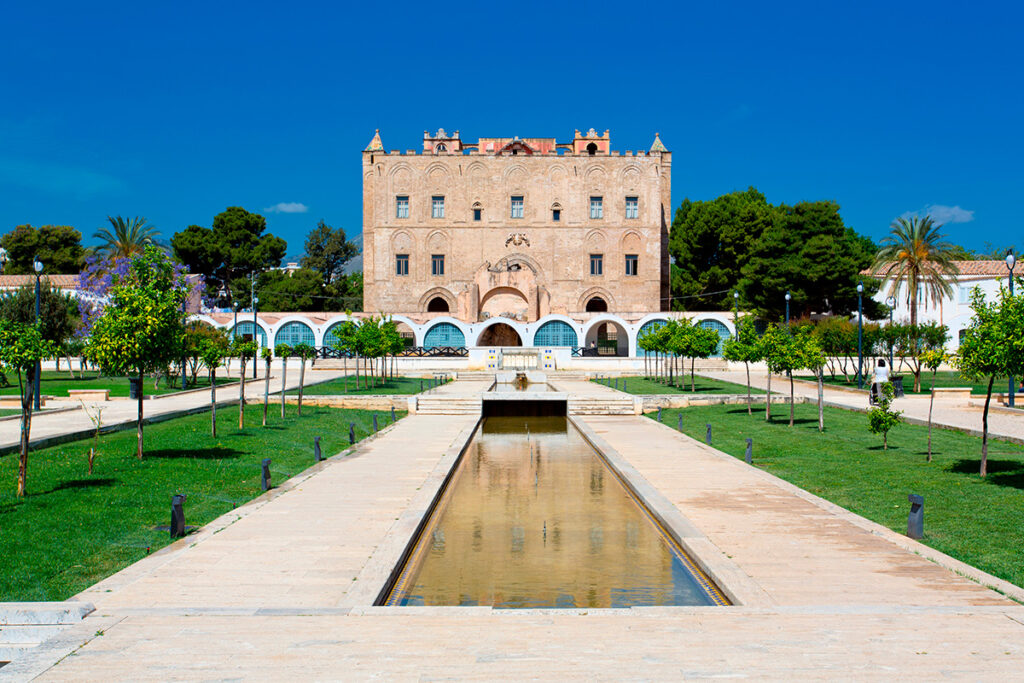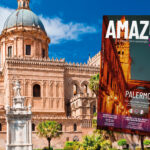Discovering the itinerary included by UNESCO in the list of World Heritage Sites
Palermo has an impressive historical and artistic heritage: founded by the Phoenicians and governed, over the centuries, by Greeks, Carthaginians, Romans, Byzantines, Arabs, Normans, Swabians, Angevins, Spaniards and Bourbons, before becoming part of the Kingdom of Italy, each population has left an indelible mark on the city, enriching it artistically and culturally. Today we will focus only on a part of these immense riches, namely the Arab-Norman Route included by UNESCO in the list of World Heritage Sites in 2015.
The Arab-Norman Route is the highest expression of cultural syncretism (the union of cultures, religions and arts that seem irreconcilable) that occurred in Palermo in medieval times.
There are eight monuments that are part of this route, to which are added, outside the city, the Cathedral and the cloister of Monreale and the Cathedral and cloister of Cefalù, to which we will dedicate space in the next issues.
We therefore begin our tour from the Royal Palace or Palace of the Normans, today the seat of the Sicilian Regional Assembly: built between the ninth and tenth centuries by the Arabs over the remains of ancient Punic settlements (traces of which are still visible today in the basement), it was subsequently transformed by the Normans, who made it both a fortress and a refined royal residence. Starting from the reign of Roger II the palace was expanded, adding the Pisan Tower, where the treasure room is located (since 1791 it also houses the Astronomical Observatory), the Gioaria Tower, home to king Roger’s Hall, decorated with mosaics depicting exotic landscapes and animals such as peacocks and leopards, and, on the lower floor, the hall of the Armigeri.
The most important addition inside the Royal Palace was certainly the Palatine Chapel, which the writer Guy de Maupassant defined as “the most beautiful church in the world”. This masterpiece is the testimony of the artistic union that was created in those years and how Arab and Norman workers worked closely together. The three-nave basilica is located on the first floor of the Palazzo dei Normanni: previously it stood alone inside the building while today its facade has been incorporated by the most recent structures. The dome, transept and apses are decorated, at the upper part, with Byzantine mosaics depicting scenes from the Bible. In the central apse stands the mosaic of Christ Pantocrator. But it is the ceiling of the central nave that makes the Palatine Chapel unique in the world: it is a wooden muqarnas roof, typical Arab, where various scenes depicting profane Islamic iconography are painted. In Europe there are only two buildings that have this type of roof and they are both in Palermo: the Palatine Chapel and Palazzo Steri.
If there is a building that represents the history and culture of Palermo, with traces left by all the peoples who have dominated the city, this is the Cathedral. The current building dates back to around 1184, commissioned by the English archbishop Gualtiero Offamilio (Walter Off the Mill). In reality it was a reconstruction as the ancient cathedral (which during the Saracen domination had also been transformed into a mosque) had been damaged by an earthquake in 1169 but already in the early Christian era there was a basilica in the same place which was destroyed in the fifth century during the vandal persecutions. Consecrated in 1185 in honor of Maria Santissima Assunta, the Cathedral has seen several renovations over the centuries, starting from the portico of the southern façade that was built in 1453 in the Catalan Floral Gothic style, while the marble balustrade that surrounds the building was built by Vincenzo Gagini in 1574 and subsequently adorned with statues of saints.
The dome was added only between the end of 1700 and the beginning of 1800 by the architect Ferdinando Fuga. In this period the plan of the Cathedral became a Latin cross and the interior was reworked in neoclassical style. Inside there are the royal tombs, among which that of Frederick II stands out, made of red porphyry. Also important is the stoup that was created by Domenico Gagini. Among the treasures of the Cathedral there is the silver urn of Santa Rosalia and the tiara that belonged to Constance of Aragon.
Among the symbolic monuments of Palermo there is the complex of San Giovanni degli Eremiti. The church, famous for its red domes, together with the adjacent convent were probably built at the behest of Roger II on the remains of a mosque. Today in the Benedictine cloister there is a nineteenth-century Mediterranean-style garden.
Among the most beautiful churches in the world there is Santa Maria dell’Ammiraglio, known as La Martorana. Located in Piazza Bellini, the church was built in 1143 by Giorgio di Antiochia, admiral of King Roger II. Its nickname derives from Goffredo and Aloisia de Marturano, founders of the nearby convent to which the church was granted in the fifteenth century. The interior, of a Greek cross, is covered with wonderful Byzantine mosaics. The frescoes created in the under chorus by Olivio Sozzi and Guglielmo Borremans in the early 1700s are also beautiful.

The Martorana is flanked by another important church: San Cataldo. Built under the reign of William I, in 1154, it was initially the chapel of a noble palace. The church is famous for the three red domes positioned above the central nave, a clear sign of Arab architectural influence. Compared to the nearby Martorana, San Cataldo has a more severe appearance and its interior strikes the visitor for the clever play of light and shadow created by the openings on the walls of the domes.
Built by Arab workers at the behest of the Norman kings (in this case William I) there is also the Zisa Castle or, more simply, “La Zisa”. The name derives from the Arabic term “El-Aziz” which means “the splendid”. It was the summer residence of kings and their court. The Castle was immersed in the royal park, where the court went hunting or even fishing in artificial lakes. In front of the entrance a huge and spectacular fountain (recently restored) welcomed the king’s guests. Its origin was in the Sala della Fontana, on the lower floor of the building, in an environment rich in art, among marbles and mosaics. The whole castle was able to stay cool even in the Sicilian summer heat thanks to a ventilation system consisting of fireplaces. Today La Zisa houses the Museum of Islamic Art.
The Arab-Norman Route of Palermo ends with the Admiral’s Bridge: built between 1130 and 1140 by the Admiral Giorgio of Antioch, the bridge served to connect the city to the gardens located beyond the Oreto river. The river was then diverted to avoid the continuous overflows and the bridge today rests on a green garden. Here in 1860 one of the most important battles for the unification of Italy was fought, the one between the Garibaldini, who wanted to conquer Palermo, and the Bourbons.
To this list of monuments another 13 sites should be added for which a request has been made for inclusion in the official UNESCO list: the church of San Giovanni dei Lebbrosi (perhaps the oldest church in Palermo), the church of Santa Maria Maddalena, the church of SS. Trinità alla Magione (known as “La Magione”), the chapel of Santa Maria dell’Incoronata, the church of Santo Spirito (or church of Vespers), the church of Santa Cristina la Vetere, the castle of Maredolce (or Favara), the Cuba (sumptuous Arab palace that was located in the Norman hunting park called the Genoardo, or paradise on earth), Cuba Soprana and Cubala of Villa Napoli (also located in the Genoardo), the palace of Uscibene, the Castello a Mare and, finally, the Qanat (hydraulic engineering works of the Arabs, they are narrow tunnels that are located underground and which allowed to transport water in all areas of the city). To these sites are added the baths of Cefalà Diana, ancient Arab baths built in one of the most remote provinces of Palermo, located in the center of Sicily.
The Arab-Norman route is just a taste of what Palermo can offer, a city that has evidence dating back to the Paleolithic (in the complex of the Addaura Caves), up to the Baroque and Liberty. An incredible combination of art and history due to the many peoples who have left evidence of their passage and who have enriched the face of the city making it unique in the world. We will soon return to talk about Palermo, discovering its extraordinary facets!





Comments are closed.